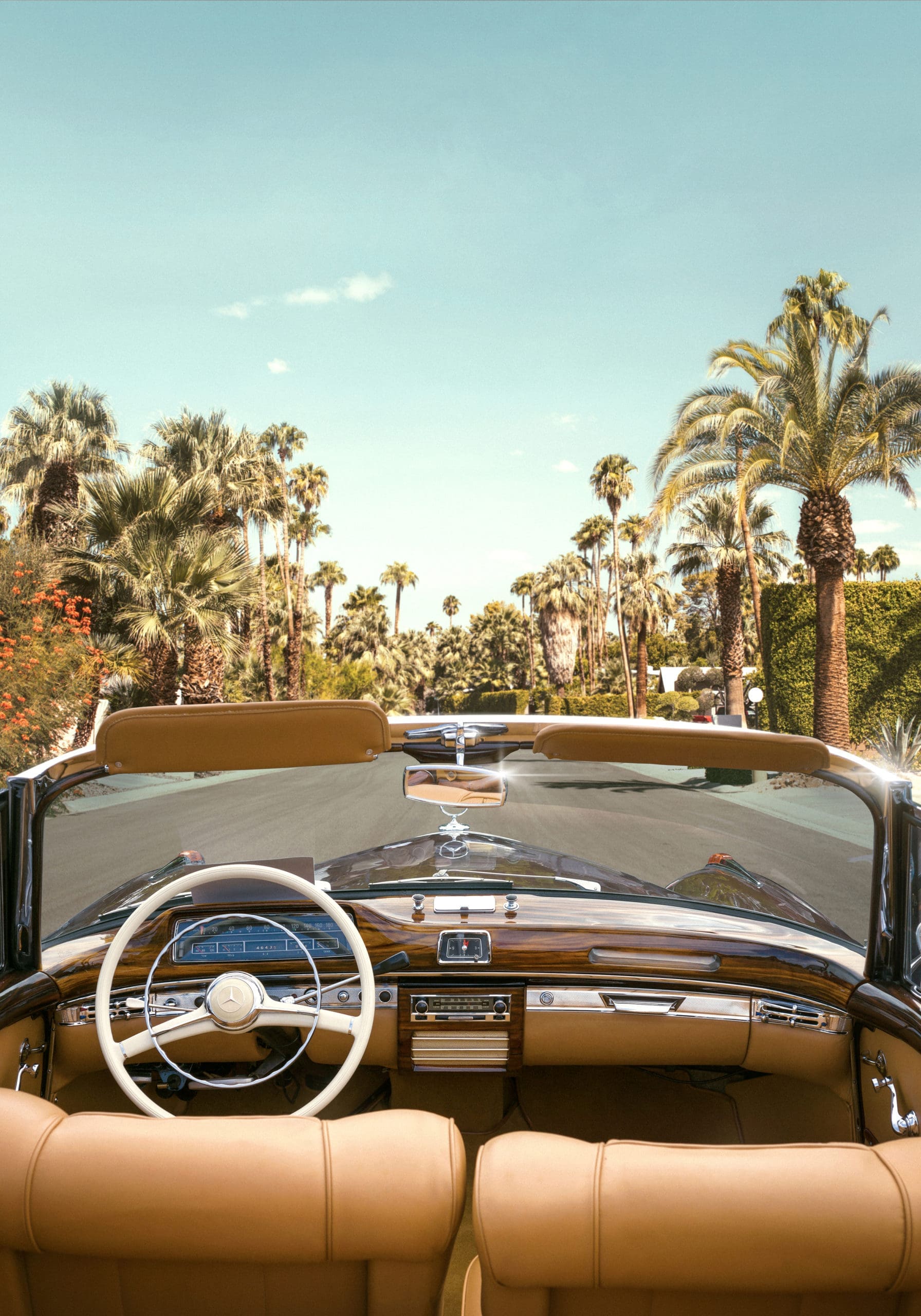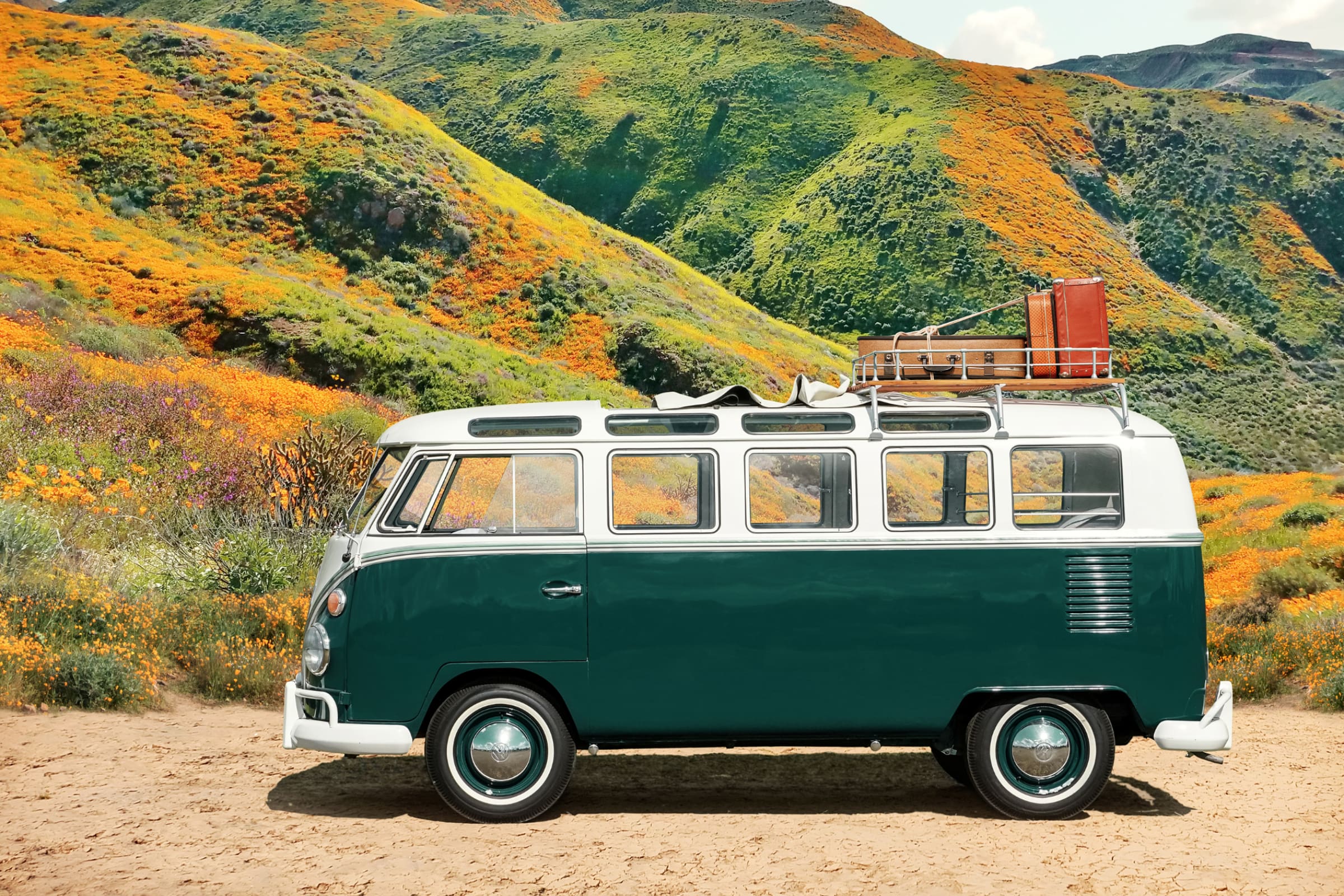For years, going cross-country by car was a dizzying mash-up of soggy McDonald’s pickles, bumper-to-bumper traffic and the age-old exasperated inquiry: Are we there yet? Driving felt inconvenient and time-consuming, especially compared to the instant gratification of air travel. But in recent months, a global pandemic has kept us grounded, and for the first time in years, Americans have been hitting the road again en masse.
The new-age road trip is experience-rich and nature-focused. Highways are the ribbons that tie together what we’ve been missing: sights seen with our own eyes, unanticipated delights and detours, and the colorful risk of finding ourselves. And we’re remembering what we’ve always loved about the open road: a sense of possibility that’s at once exhilarating and comforting.
The great American road trip boomed in the fifties and sixties, when cars were luxurious yet affordable and interstates connected smaller roadways into a vast nationwide network. The entire country saw the wind in their hair. Dinah Shore sang “See the U.S.A. in Your Chevrolet” in an ad showcasing the mile-long Impala. War dads, finally home from World War II and accustomed to seeing the world, packed up their families to drive from coast to coast. Somehow the stress of journeying cross-country bonded those traveling together. We saw it play out in 1983’s National Lampoon’s Vacation, in which Clark Griswold’s idea of family fun was driving four hours out of the way to see the world’s second largest ball of twine.

Photography by Paul Fuentes
Eventually, our quirky romance with the highway fizzled, in part thanks to the Airline Deregulation Act of 1978, which made air travel cheaper. The jet set could now focus on the destination rather than the journey from the comfort of their window seat in the clouds, a cocktail in hand and a Rand McNally map nowhere to be found.
Fast-forward to 2020, when a pandemic ignited our fears overnight. Airports emptied. The travel industry faltered. Last April, TSA screened a meager 109,000 people a day nationwide compared to some 2.3 million the year before. And yet, the yearning to roam persisted. Americans found freedom on the freeway — in their Chevrolet, in their newly acquired Airstream trailer, in their rental RV (an industry that saw a whopping 1,000% boost in bookings last spring).
Aside from the obvious appeal amid the coronavirus outbreak, why does the open road have such newfound allure? For starters, it provides a stark contrast to the nonstop nature of our digital world. Lumbering down a highway with no set timeline or destination feels refreshing. It lets us time travel back to simpler days.

“We’ve learned how to slow down,” Dana Haim and Jaron Gilinsky explained to Vogue of their family’s journey across the country in an Airstream after giving up their lease mid-pandemic. “We’ve learned about our kids’ limits. We’ve learned our limits as parents. We have also learned firsthand that no matter where we roam, we are all still connected to each other and to Mother Earth. We hope this will be the year where people reconnect with themselves and figure out how we can all improve the world we live in, even in a small way.”
“I was tired of the walls of my house — pretty sure the walls were tired of me,” Christopher Solomon echoed in The New York Times. “But where to go? There was one answer: away. Away from the relentless bad news. Away from the unceasing grief. Back to ‘the rock-bottom facts of ax and wood and fire and frying pans,’ as John Graves wrote in Goodbye to a River.”
Suddenly “Are we there yet?” feels like a rhetorical question. Instead of simply traversing from point A to point B, Americans are ambling about, hitting the highway in search of themselves. Perhaps that’s what the coronavirus outbreak has given us: the chance to see the road for more than rumble strips and grungy pit stops. The realization that the open road provides an opportunity for soul-searching — a truth that is sure to stick post-pandemic, soggy McDonald’s pickles and all.


